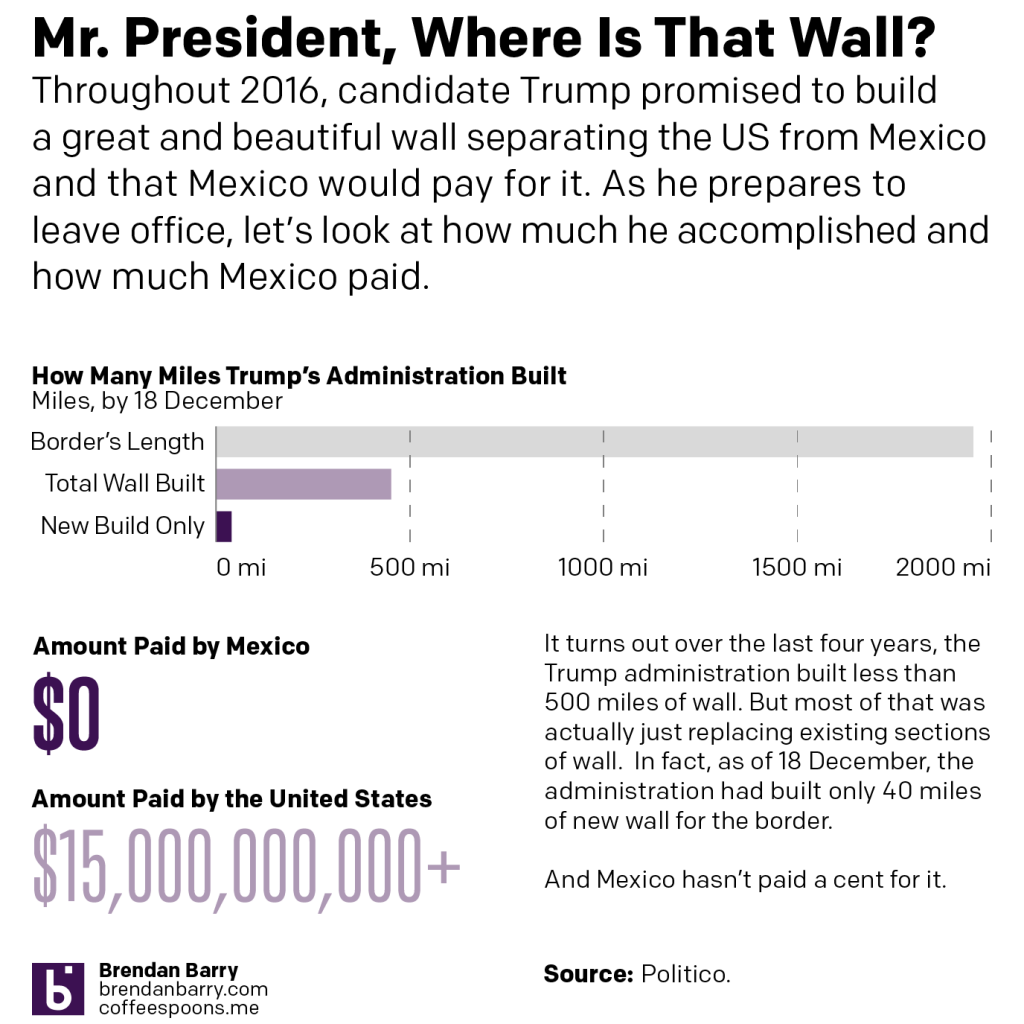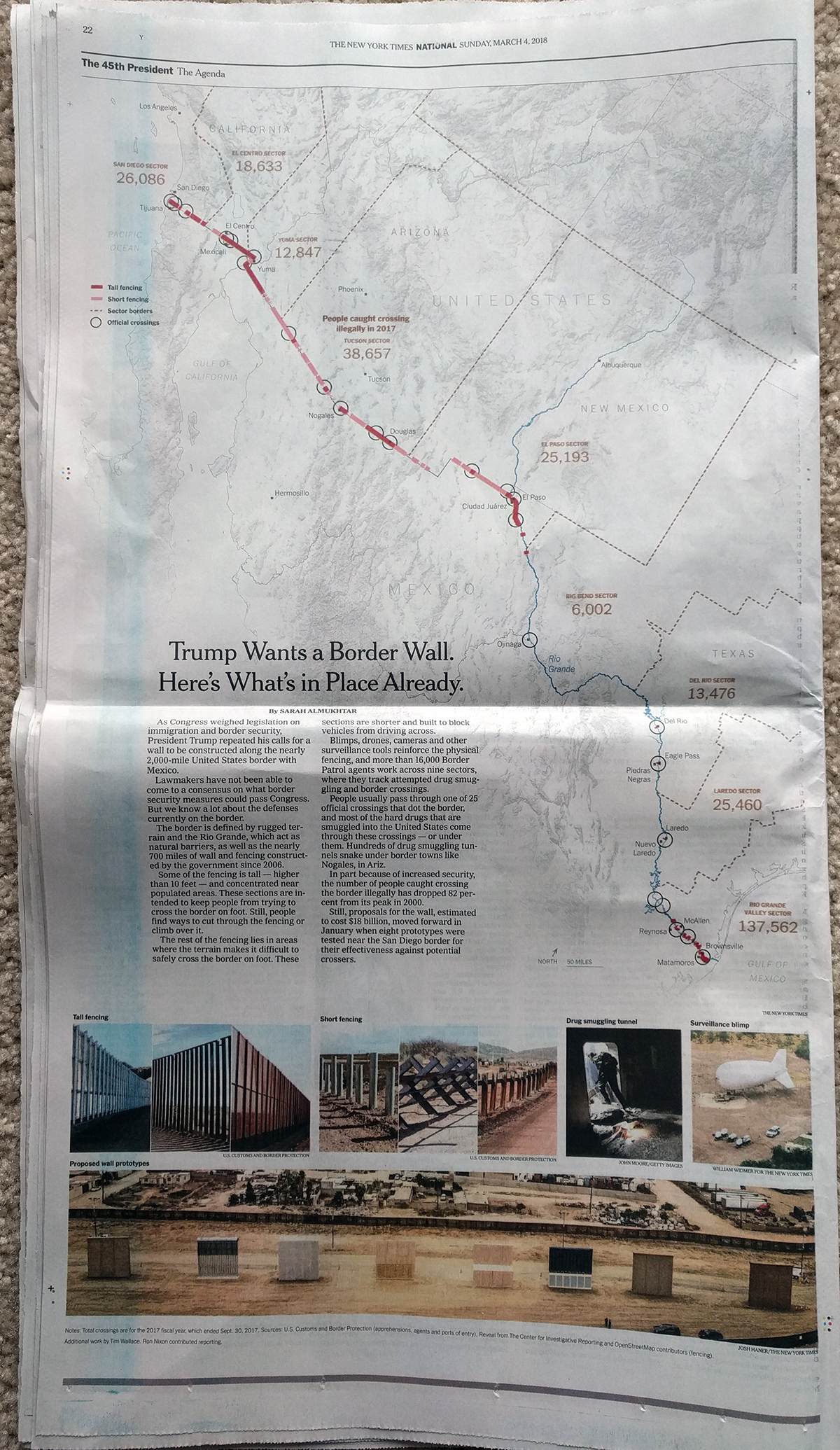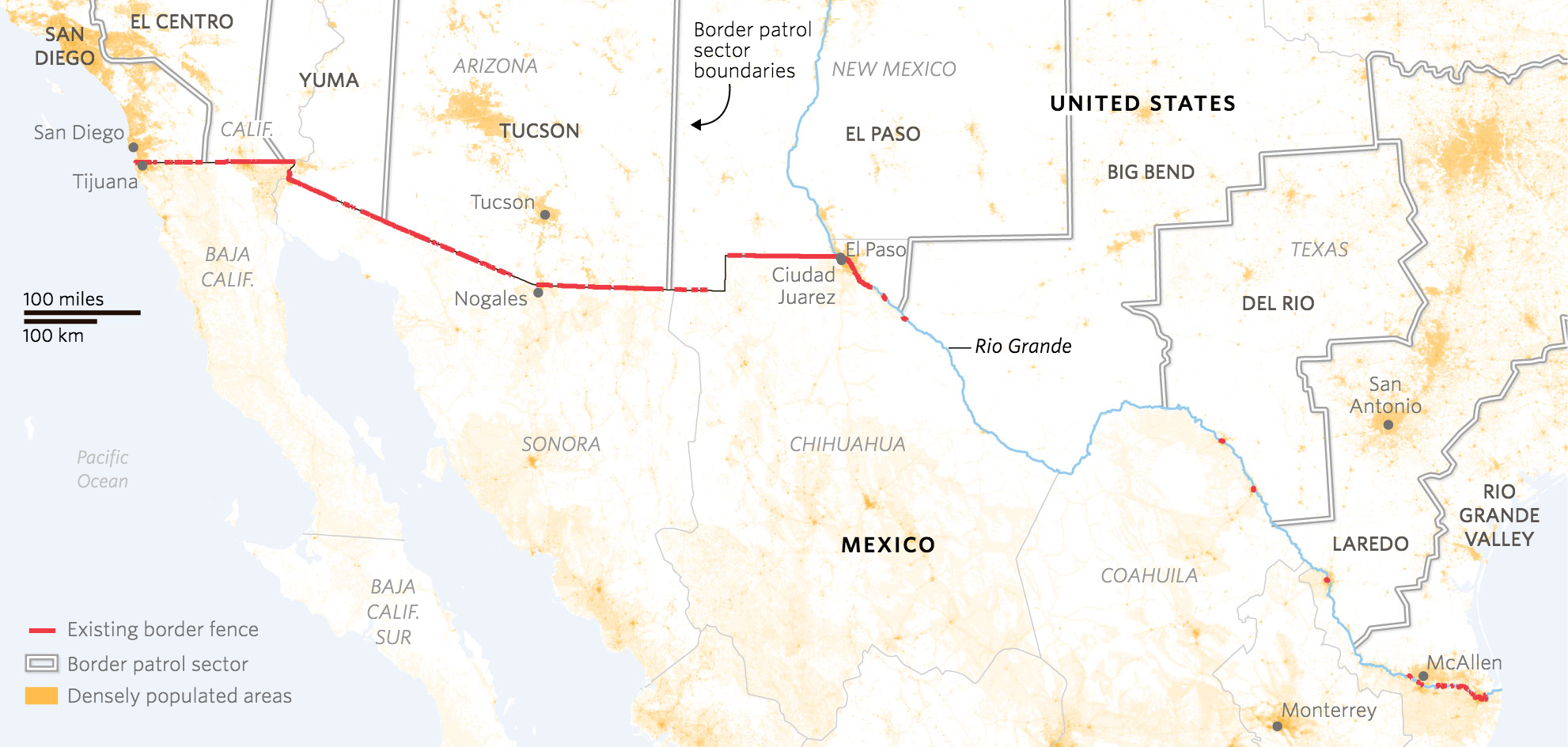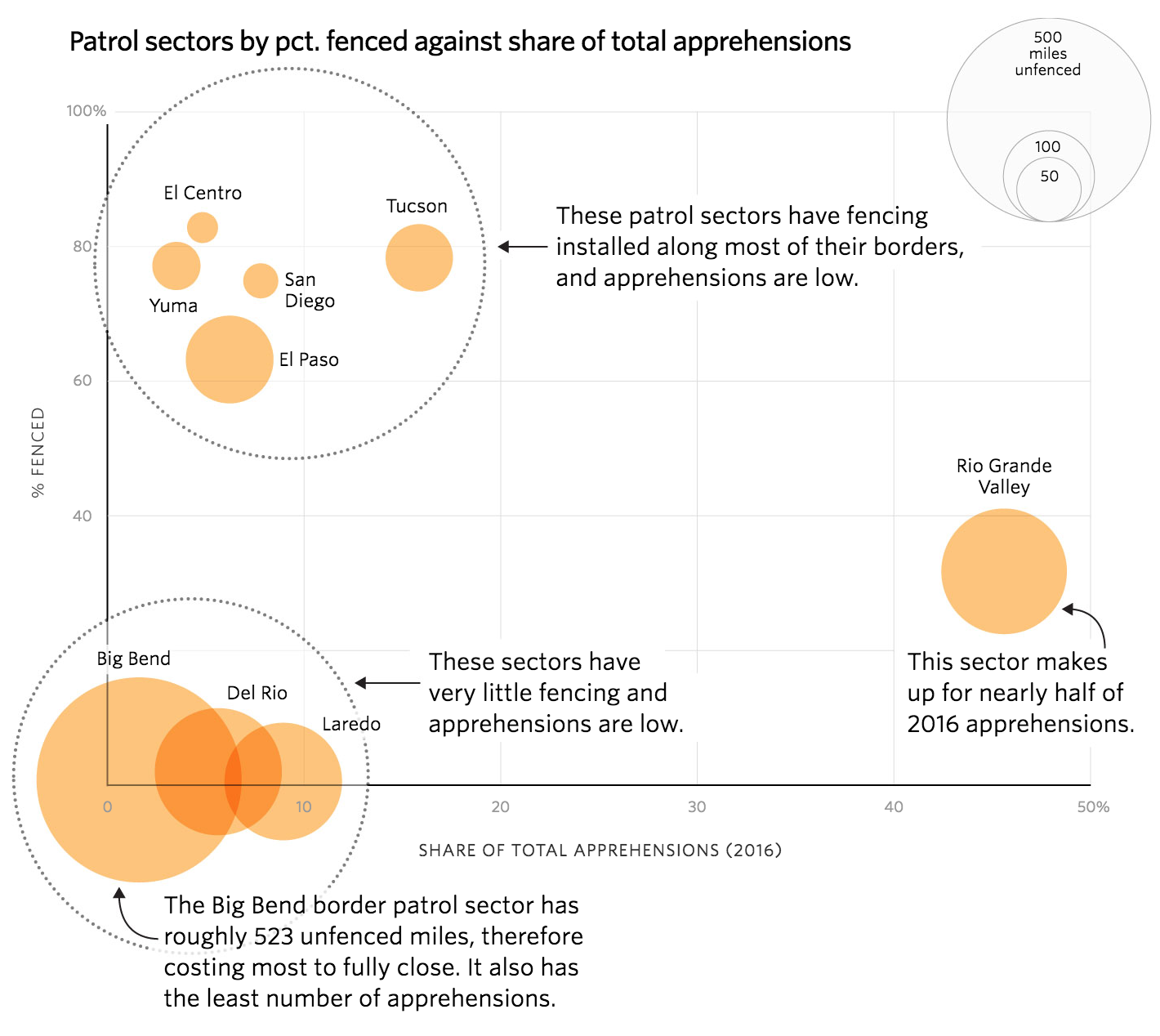I meant to publish this yesterday, but this piece also offers a reminder that the hardest part of a data-driven story is usually finding the data. I was unable to find a single source of data for all the numbers I needed by the time I switched on for work. And so this had to wait until last night when I found what I needed.
And of course upon waking up this morning I found a few new articles with the data and more recent figures.
Since 2016, Trump has made building a great, big, beautiful wall on the US-Mexican border his signature policy. Of course, most illegal immigrants cross the border legally at checkpoints and normal ports of entry. A significant number are people who overstay the limits on their visas. So the efficacy of a great, big, beautiful wall is really not that great.
He also claimed that he would make Mexico pay for it.
So as he prepares to leave office, Trump this week is going on something of a victory tour and touting up his administration’s successes. The first stop? Alamo, Texas to highlight his wall.
Let’s look at that wall and how much the administration has accomplished.

For context, the US border with Mexico is nearly 2000 miles long. As of 18 December, the administration had built 452 miles, less than a quarter of the border’s total length.
Crucially, most of that construction merely replaced sections of existing wall and fence scheduled for replacement. The total amount of new wall built, as of 18 December, totals about 40 miles.
The cost of that 452 miles? More than $15 billion.
How much has Mexico paid? $0.
Credit for the piece is mine.




